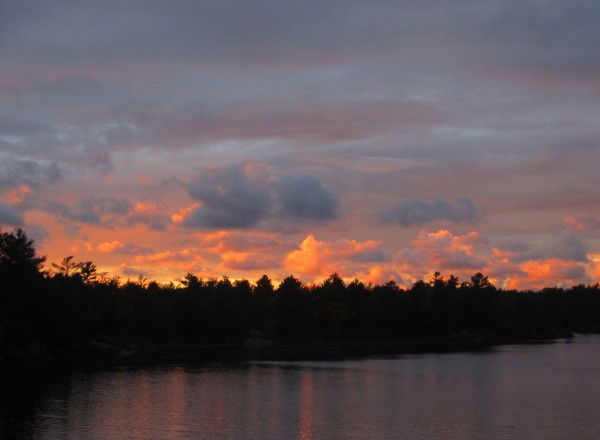Bookends

We traveled back to northern Ontario a few weeks ago. The last time we visited, it was springtime and I wrote about that season in an earlier post. The wilderness was awake with nesting birds and budding trees. It’s now autumn and the colours of the landscape have changed. Sunsets seem brighter, the wind cooler and the air is damper. This year, the wind off the lake was very strong, making it difficult to canoe except in those rare hours when the water was calm. The fall season does have its advantages. Once a few overnight frosts have occurred, the biting insects go to ground allowing bug-free hikes in the forest.

The wet forest floor is ripe with mushrooms at this time of year. I could only admire and photograph as I didn’t know which ones were edible.


Foraging
Having access to the forest at this time of year also allows me to forage for leaves and berries that make a distinctive northern tisane. I found Juniper berries (which ripen every two years), Wintergreen (Gaultheria procumbens), Bearberry leaves (Arctostaphylos uva-ursi), also sometimes known as Kinnikinnick, wild Raspberry leaves and wild Bog Cranberries (Vaccinium oxycoccos).


Northern Blend
If you live north of the 45th parallel of latitude you’ll find these leaves/berries in Mixed or Boreal Forests. In the U.S., the states of Wisconsin, Minnesota and northern Michigan probably have a similar flora. I’m sure most can be found in northern Europe as well, Bearberry being the most obscure. It does apparently grow in northern Europe and at high altitudes in southern Europe as far south as Italy and Greece. If you can’t find any of these berries or leaves, Camellia Sinensis Tea House in Quebec has a pretty good facsimile blend called La Boreale and available online.
After the leaves and berries were dried (I did keep the Cranberries fresh), I set about making a “Northern Blend”. The title of this post Tea in the Great Canadian...I suppose isn’t technically correct as this is a “tisane” and completely non-Camellia sinensis, but we’ll let that pass for today.
To make the blend, I used equal amounts (approx. 3 tsps) of Raspberry, Bearberry and Wintergreen leaves, approx. 6 Juniper berries and 8 fresh wild Cranberries. I crushed all in a mortar and pestle (you could used the back of a spoon and a cutting board). Boiling water was added and the blend was infused for 5 to 6 minutes.

I was thrilled that all the elements in the blend were so compatible. Wintergreen’s minty freshness was offset slightly by Juniper’s resiny flavours. Both the Raspberry and Bearberry leaves added a warm grassiness and the Cranberries gave the blend a pink hue and hint of fruitiness.
The blend, like all herbal tisanes has some lovely side benefits – calming, aiding digestion, pain relief, but I would be happy to drink it just for the flavour. Next year I will harvest enough to set aside for my winter supply. Important note on foraging – avoid over harvesting or you may not find any the following year! Remember that the local deer, bears and other creatures rely on these herbs for food.
Cabin Life
The Guelph Stove Co. wood stove is a leftover from the days when these log cabins were part of a hunting and fishing lodge. It’s really just an accessory now, but it is in good working order. We had to forage for wood in the forest. There were lots of dead falls – birch, oak and maple – nice hardwoods that burned slowly and were not pitchy. Some were damp from the rain, but soon dried out from the heat of the stovetop. There’s nothing quite like the warmth and aroma of glowing wood coals.

Goodnight until next spring




